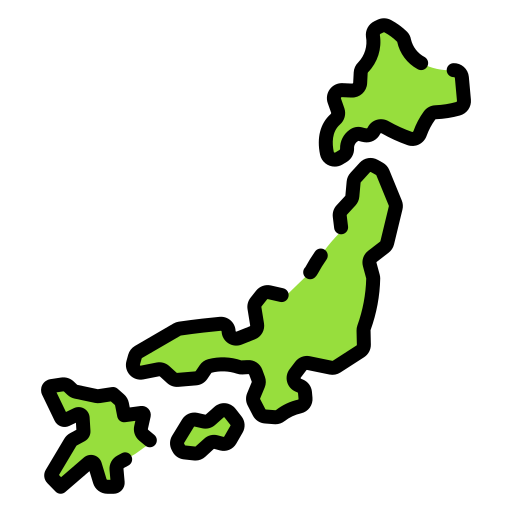The gentle sizzle of salted salmon under the broiler. The comforting aroma of freshly steamed rice. The savory warmth of miso soup cradled in your hands. There’s something profoundly satisfying about a traditional Japanese breakfast that makes it worth waking up for. Unlike the often sweet Western breakfast options, a Japanese breakfast offers a savory start to your day with nutritional balance and mindful eating at its core.
Want to explore Japan’s culture?
Discover Japan’s rich culture, traditions, and hidden gems with our expertly crafted guides. Get insider tips on travel, food, and history. All for free!
What Makes a Japanese Breakfast Special?
A traditional Japanese breakfast, or asagohan (朝ご飯, literally “morning rice”), is a carefully balanced meal centered around fresh, seasonal ingredients. Unlike the quick toast or cereal that many of us grab on busy mornings, a Japanese breakfast is meant to be savored and enjoyed as the most important meal of the day.
The foundation of any authentic Japanese breakfast consists of three essential components:
- Steamed white rice – The heart of the meal
- Miso soup – A warming, probiotic-rich starter
- Grilled fish – Typically salted salmon (shake) for protein
This core is often complemented by various side dishes, creating what’s known as ichiju sansai (one soup, three sides) – a balanced approach to meal composition that has been part of Japanese food culture for centuries.

The Essential Components of a Traditional Japanese Breakfast
Rice: The Foundation
In Japan, rice isn’t just a side dish—it’s the cornerstone of the entire meal. The word for “meal” in Japanese is gohan (ご飯), which literally means “rice.” For breakfast, freshly steamed short-grain Japanese rice is served in a small bowl, typically without seasoning, allowing its subtle flavor to complement the other dishes.
Pro Tip: For authentic Japanese rice, rinse it thoroughly until the water runs clear before cooking to remove excess starch.
Miso Soup: The Soul-Warming Start
A small bowl of miso soup provides warmth and umami depth to start your day. Based on dashi (a stock typically made from kombu seaweed and bonito flakes), miso soup can contain various ingredients depending on the season and region. Common additions include:
- Tofu cubes
- Wakame seaweed
- Shijimi clams (or substitute with littleneck clams)
- Sliced scallions
- Seasonal vegetables
As we explored in our Omakase guide, the seasonal approach to ingredients is fundamental to Japanese cuisine, including breakfast.
Salted Salmon: The Protein Centerpiece
Shiozake (salt-cured salmon) is perhaps the most iconic protein in a Japanese breakfast. The salmon is typically salted and allowed to cure, then broiled until the skin crisps and the flesh remains juicy. Unlike Western preparations, Japanese breakfast salmon is notably saltier, designed to complement the neutral flavor of rice.
Supporting Cast: Side Dishes
A traditional Japanese breakfast includes several small side dishes that add variety in flavor, texture, and nutrition:
- Natto – Fermented soybeans with a distinctive sticky texture and pungent flavor
- Tamagoyaki – Sweet-savory rolled omelet
- Tsukemono – Various pickled vegetables that aid digestion
- Nori – Dried seaweed sheets
- Hiyayakko – Cold silken tofu with toppings
- Ohitashi – Blanched spinach with soy sauce and sesame

The Art of Preparing a Japanese Breakfast at Home
Creating a Japanese breakfast at home might seem daunting, but with some preparation, it can become a rewarding weekend ritual or special morning treat. The beauty of a Japanese breakfast lies in its adaptability – many components can be prepared in advance or substituted based on what’s available.
Weekend Prep Timeline
To prepare a complete Japanese breakfast without overwhelming yourself in the morning, consider this preparation timeline:
- 24-36 hours ahead: Salt your salmon fillets (2 teaspoons of salt per 8oz fillet)
- 12 hours ahead: Soak kombu in water for dashi
- The night before: Prepare any quick pickles
- Morning of: Cook rice, finish the dashi, broil the salmon, and assemble other components
As we discussed in our Japanese food guide, many elements can be prepared in advance, making the morning assembly much more manageable.
Modern Adaptations for Busy Lives
While a full traditional Japanese breakfast might not fit into everyone’s daily routine, you can incorporate elements into your lifestyle:
- Weekday simplified version: Rice, miso soup, and a pre-made side like tamagoyaki
- Make-ahead components: Prepare several side dishes on Sunday for the week ahead
- Japanese breakfast bowl: Combine elements in a single bowl for a quicker meal
Love Japan? Stay in the Loop!
Get the best of Japan straight to your inbox: language, culture & travel insights!
Health Benefits of Starting Your Day the Japanese Way
A traditional Japanese breakfast offers numerous health advantages:
- Balanced nutrition: Provides protein, complex carbohydrates, vegetables, and fermented foods
- Gut health support: Fermented foods like miso and pickles contain beneficial probiotics
- Steady energy: The balanced combination provides sustained energy without sugar spikes
- Mindful eating: The variety of small dishes encourages slower, more mindful consumption
- Portion control: Small portions of various foods satisfy without overindulging
Japanese Breakfast vs. Japanese Breakfast Band: A Cultural Note
It’s worth noting that “Japanese Breakfast” is also the name of an acclaimed indie rock band led by Korean-American musician Michelle Zauner. As we explored in our article about Michelle Zauner, her band’s name was inspired by the contrast between American and Asian breakfast traditions, highlighting cultural identity themes that also appear in her memoir “Crying in H Mart.”
Common Questions About Japanese Breakfast
Is a Japanese breakfast difficult to prepare?
A traditional Japanese breakfast requires some preparation, but many components can be made ahead of time. The simplest version (rice, miso soup, and grilled fish) takes about 30-45 minutes to prepare.
What is the most important part of a Japanese breakfast?
Rice is the foundation of a Japanese breakfast. The Japanese word for “breakfast” is “asagohan,” which literally means “morning rice.”
Can I prepare Japanese breakfast components in advance?
Yes! Many elements like pickles, salted salmon, and even portions of rice can be prepared days in advance and assembled in the morning.
Is Japanese breakfast healthy?
A traditional Japanese breakfast is nutritionally balanced with protein, complex carbohydrates, vegetables, and fermented foods, making it a healthy way to start your day.

Ready to Explore More Japanese Language and Culture?
If you’re fascinated by Japanese culinary traditions and want to deepen your understanding of the language, check out our free guides:
- Counting to 100 in Japanese
- 100+ Essential Japanese Phrases
- Hiragana & Katakana Cheat Sheet
- JLPT N5 Kanji Cheat Sheet
These resources will help you navigate Japanese menus and engage more deeply with the culture behind these beautiful culinary traditions.
Conclusion: Embrace the Mindful Morning
A Japanese breakfast offers more than just nutrition—it’s a ritual that encourages mindfulness, appreciation for seasonal ingredients, and a balanced approach to starting your day. By incorporating elements of this tradition into your morning routine, you can transform breakfast from a rushed necessity into a moment of culinary meditation.
Whether you’re preparing a full traditional spread for a weekend treat or simply adding miso soup to your weekday routine, the principles of a Japanese breakfast—balance, seasonality, and mindfulness—can enhance your relationship with food and provide a centering start to each day.
What is the main component of a traditional Japanese breakfast? Rice is the foundation of a traditional Japanese breakfast.
Join Fellow Japan Enthousiasts!
Ask questions, get study tips, and take part in weekly challenges. Join a community of motivated learners exploring both the language and culture of Japan!




